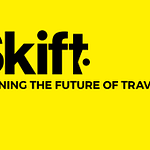Hi,
Welcome to Remotely Inclined, a newsletter about running a business remotely. If you’d like to sign up, you can do so here. Want to share your feedback? Respond to this email (or send me one) Or just read on…
Joe Blair is a venture capitalist in Silicon Valley firm Cota Capital and host of the Epic Human Podcast, but before that he was an engineer turned entrepreneur. His first foray into the concept of remote work was when he invested in an air taxi service back in 2017, which caused him to think more consciously about where people could live and work. At the time, remote work was seen as an exciting new prospect, but potentially more hype than reality. COVID obviously changed things a bit.
In this episode of Remotely Inclined Chats, Joe and I dig deep into how VCs are thinking about remote work, how the whole VC ecosystem has changed from in-person to remote, and how successfully fundraise remotely without “remote washing.”
From opportunity to reality
When Joe first got into remote work back in 2017 / 2018, a lot of the conversation was how remote was a niche thing that had some potential. COVID forced everyone to try it, and now the conversation has shifted from potential to practicality.
The first Remote Work Expo that Joe hosted in 2019 had 35 attendees. The April 2020 edition had over 450. The questions focused on the right tools and management practices for remote work.
Even though many workers are looking forward to returning to office life when it’s safe to do so, Joe says that he’s seen a decade’s worth of acceleration in the remote work movement due to COVID.
“Remote washing” is out, accurate categories are in
With the rise of remote work came “remote washing” - slapping a “we help remote teams” logo on your business, similar to “greenwashing” when companies talk about helping the environment as a marketing tactic.
Joe said that most venture capitalists can see through remote washing, so it won’t help your odds of fundraising in this environment just by saying you work for remote teams.
Technologies that help remote teams often fall into one of four categories: horizontal solutions explicitly for remote teams, vertical solutions for a specific industry that includes remote workers, physical infrastructure to support remote work, and back office functions that support remote companies. You can build a successful company in any of these categories.
Building VC relationships remotely
VCs are adjusting to the new reality of becoming remote workers, said Joe, and a new study found that 69% of VCs are giving all-remote deals the green-light. Joe’s VC firm, Cota Capital, just finalized its first all-remote deal, investing in medtech startup Proprio.
If you want to fundraise remotely, you need to work on digital relationship building skills and focus on authentic reach outs. Whatever you do, don’t copy-paste a generic blast out to every VC you can find.
Warm intros are still the best bet, but if you can’t get one, then anchor your efforts in a genuine connection to what the VC is interested in personally. You’re far more likely to get a response if you’re talking to them about blogs they’ve written, podcasts they host, or other ideas they’ve put out into the world versus just talking about what their fund is doing in that particular moment.
The final word
“I think we’ve accelerated this transition to remote work by at least a decade.”
I’d be so grateful if you shared this article with your colleagues and friends who are interested in remote work
Remotely Inclined Chats with venture capitalist Joe Blair
Transcript edited for brevity and clarity.
Stefan: Welcome, Joe! Can you share your journey with remote work?
Joe: Sure. To put it into context, I’m from the New York / Connecticut area. I was originally an engineer, turned entrepreneur, turned venture investor. I’ve been doing venture investing for the last seven years after graduating from Harvard Business School.
I came to remote through my interest in mobility. About three and a half years ago I started getting interested in the future of aerial mobility, which led me to an investment in a company called Lilium, which is an on-demand electric air taxi company. It’s a new transportation paradigm where you can get from city to city in the air, on-demand like you would with Uber.
I started thinking harder about if this new transportation dimension were to manifest, where would people live? I then started thinking about what if you don’t have to commute at all.
Then I found myself in Wyoming at a round table discussion with the then governor. We were talking about mobility and he was asking how we bring San Francisco-based tech companies to Wyoming. I was in this beautiful log cabin style mansion, snow-capped peaks all around me, and I started thinking that it was one of the most beautiful places I’d ever been. I was struck by the irony that they were asking how to get people to live there, meanwhile in the back of my mind I’m thinking I would love to live here, so how can I figure out how to work remotely and live here?
So I started thinking about it from first principles as an engineer. The internet exists. Remote conferencing exists. Cloud-based productivity tools exist. Why can’t people work remotely? It didn’t seem to me like there was a technology barrier.
What barriers were holding people back?
I put together a summit to explore this topic back in 2019. Remote Summit. It was a virtual conference - we had 35 people show up, and we powered it with Remo.co.
We had some thought leaders, including Laurel Farrer from Distribute Consulting and the first head of remote at AngleList, and some of my VC friends showed up. And we talked about remote - I think the title at the time was about whether remote was hype or a huge opportunity. The context was all about that remote is happening, but is still kind of niche and a futuristic concept. It would probably take us 10 years to progress and there are probably a few dozen companies that have started innovating in this space.
I remember thinking it would probably take a long time but maybe there are early investments to be made. And then COVID hit and the world flipped upside down. All of a sudden, these companies had to go fully remote. They were forced to do it. Then people realized they could get by. Maybe they needed different management styles, but there’s good arguments out there for if remote work is at parity with working in an office. I think it depends on management style.
But if you look at the big picture of this Black Swan event for remote work, let’s say 2% of knowledge workers were working remotely pre-COVID. Now it’s about 80% to 90%. Then when things “go back to normal,” let’s say that number goes down to 20%. That’s still a 10x jump in a very short period of time.
I think we’ve accelerated this transition to remote work by at least a decade. It’s been an extremely exciting time. You have announcements from companies like Coinbase, Twitter, Square, and Shopify, saying this is working for us and we’re going fully remote - at least an an option - in perpetuity.
And it’s a huge shift in mindset of employers, because they are realizing that many employees really value remote work. They get to spend more time with family and friends, reduce time commuting, and live life on your schedule.
What are you seeing in VC conversations about remote work now?
At the beginning of April, I had another conversation with Laurel Farrer, and we decided to do another summit. The conversation was around managing a team remotely - what tools are available. Many entrepreneurs had been working on these products for years and now they’re making their products available. So we did another Remote Startups Expo, about the tools, software, and platforms that are going to enable this transition to remote work.
I think there’s excitement in the air. And an acknowledgement all around that the tools we have are not optimized for the needs of managers and employees alike.
I tend to split the category of remote work into four different categories:
Horizontal collaboration tools like Tandem chat.
Vertical collaboration tools around a particular industry, like Pendo Health out of the UK that’s effectively Slack for medical professionals.
Physical infrastructure. Having some sort of location to go to whether it’s a home office or a third place.
Back office for things like hiring remote workers across the US and different countries.
Entrepreneurs are taking advantage here in a good way. They’re providing solutions that are really needed. It feels like we’ve been talking about remote work for a long time but it’s really only been a couple months. We’re still at the very early stages of this game.
How are VCs shifting to remote and assessing deals remotely? How do you avoid “remote washing”?
I think Brianne Kimmel makes a good point about remote washing. With any hot trend, you’re going to see this. Like greenwashing or what I called block-washing for blockchain.

Any good investor can see through that almost instantly. What I think the nuance here is that there are tools built specifically for remote teams and then there are tools that are horizontal by nature that are good for centralized and remote teams.
There are legitimate businesses built in all those four categories I mentioned before that would not be considered remote washing.
But VCs have a very old-school mentality. They want to meet in person. To shake hands. They say ideally people live in my zip code so I can visit their office. But I think that’s starting to change.
Like in every other industry, VCs are coming to grips. The reality is it doesn’t matter if your company is in Santa Clara, New York City, or Hong Kong. I’m not going to be able to meet you in person any time soon. So what’s the difference?
I’ll speak for Cota Capital, my firm. We just made our first remote investment a few weeks ago called Proprio, an exciting company out of Seattle, Washington. We met them virtually, did all our diligence virtually, and couldn’t be more excited about the investment.
VCs are challenging their own assumptions and are having to deal with this idea of becoming remote workers themselves.
What’s your advice for a founder looking to fundraise remotely?
The hardest part is making that connection when you don’t have it already. So of course warm intros ar egreat, but those aren’t always accessible to everyone. So for the folks who don’t have warm intros or existing relationships, I advise people to read up on the investors that you find personally interesting. Go to their Twitter, Instagram, podcast, read their writing. Get a feel for what they are interested in.
If you’re building something that fits their investment categories or things they get excited about, I would suggest reaching out directly in an authentic way, saying ‘hey, I read your article. I’m building something that I think you’ll find interesting in this category.
I love to jump on the phone when people do that for me and I can tell they’ve actually read up on me and done some homework. It’s not always a fit, but I almost always get back to them.
I don’t advise you just copy-paste your email and blast every VC in the valley and see who gets back to you. I don’t think that’s a wise approach.
Amazing, thank you for your insights!
You can get in touch with Joe on:
Twitter: @joeblairvc and @epichumanpod
Instagram: https://instagram.com/epichumanpodcast
Website: https://www.epichumanpod.com/















Share this post